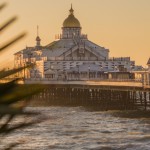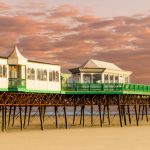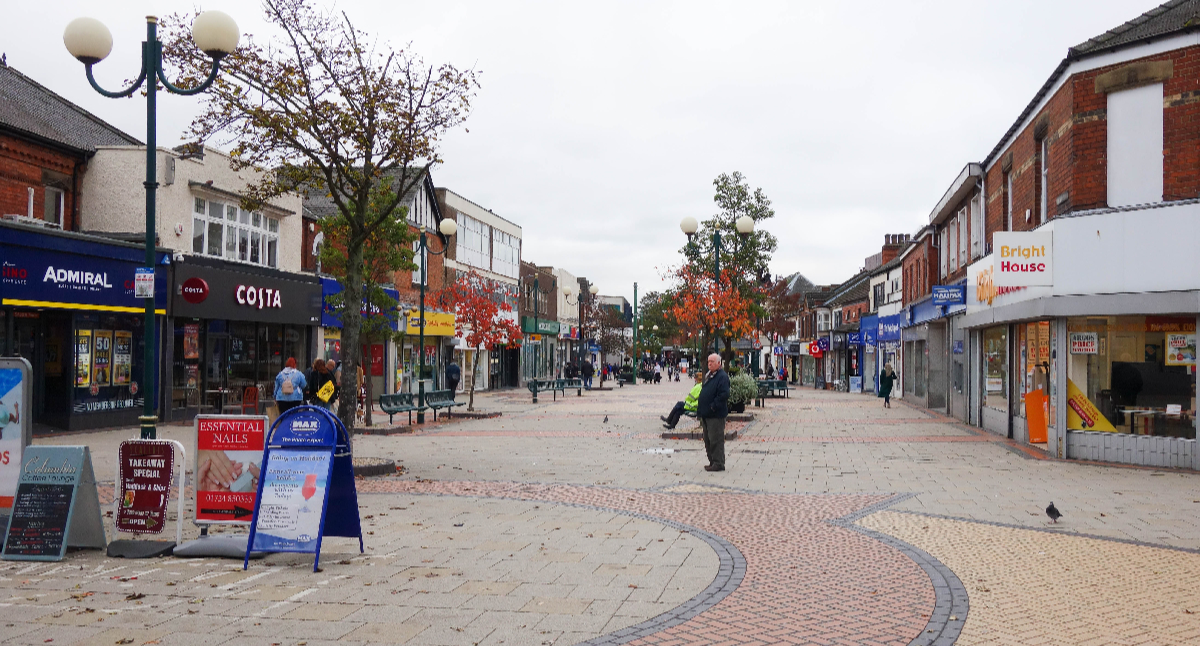
Scunthorpe the Lincolnshire industrial town built on Ironstone.
Sounds like a line out of a Sword & Sorcery B Movie, doesn’t it. Well, fear not, this is our guide to this fine town and not a movie review! Anyway, bad jokes aside, as our regular readers know, here at Five Minutes Spare, we are always reviewing the best and brightest of British towns. Scunthorpe is one of a long list of places we haven’t got to yet… until today. This Industrial era residence has grown in stature over the years, to become one of the best-known names in England – but why?
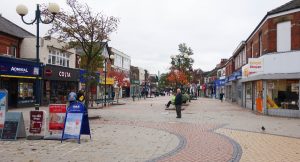
Town Centre
Image: Michael715/Shutterstock.com
How did Scunthorpe come to be such a noted name in the UK? We hit the research books to try and find out.
Let’s start with the early days of Scunthorpe and go from there.
The Early History of Scunthorpe
Although most sources will tell you that Scunthorpe was founded in 1870, we have it on good authority that there was human settlement in the area long before that. There is evidence of human inhabitants from the Old Stone Age, something like 12,000 years BC. There have been multiple recordings of the area being inhabited by the Romans, too, circa 47 AD. Flint arrowheads, shields, and wood or bone weapons, have all been found in the area.
It is believed that the name for Frodingham – once a village, then a suburb, now part of Scunthorpe, comes from the pre-Roman settlers in the area. It is believed that ‘Froda’ would have been a landholder in the area, with the ‘ingaham’ added to mean ‘the lands belonging to’. In Scunthorpe, the etymology is similar. It is thought that Scunna was the local landowner, and ‘thorpe’ was added to describe his lands. In England at that time, there were four or five different languages being spoken so many townships were an amalgamation of more than one.
From 870 AD the last of the Romans were long gone and the Vikings were invading. Scunthorpe, although not directly on the seafront, sits on the River Ancholme, which would have been traversable to determined Danes. It is believed that the last Danes to come to this area actually stayed, settling it. Remember, the driving force behind the Viking invasions wasn’t always greed, many times, the people were literally looking for greener pastures than found in their frozen northern regions.
The Romans Head Home
When the Romans left, they had crisscrossed the area with roads. Crossings, rivers, and levelled Roman Stone Roads, were now leading all over the place. One such road would have run through Scunthorpe, allowing a settlement to spring up there. Evidence found by archaeologists in the area record several Anglo-Roman pottery kilns in operation here. It may have sported a pottery store or two.
In the 7th century, missionaries passed through here on their way to bring God to the kingdom of Lindsey. A local man found bells that evidence this, which now reside in the local museum.
Let’s take a break before we move on to the Industrial Era. For the next few hundred years, all that lived in this area were a few sparse farms, the odd house, and the village of Frodingaham – which later dropped that middle a. Frodingham remained its own place until it was absorbed by Scunthorpe, some time after 1870.
Top Trivia About Scunthorpe
We love to break up each historical section we survey with some fun. Today’s daily dose of what’s cool to know about Scunthorpe sports the following things:
- Scunthorpe is still sometimes called the Steel Garden, just because it has produced so much steel over the years. It has been the biggest producer of steel in the UK.
- In a morbid turn of events, workers near the A1077 found a huge stone coffin in 1968! the coffin contained the body of a young woman, but nobody ever found out who she was. The best guess is that she was a well-off Roman woman whose family was rich enough to buy her a stone Sarcophagus. she has been nicknamed the Winterton Lady.
- A free train leaves every Saturday morning that lets you view all 2k acres of the steelworks in Scunthorpe. It’s an extensive look into an industrial area for anyone that appeals to.
- Golden Wonder are the official crisp makers of Scunthorpe. The illustrious Cheese and Onion flavour of crisp is said to have been invented here more than fifty years ago.
There are lots of little interesting points about Scunthorpe. For example, if you order snakebite here, it won’t be a cider/lager combo, but rather a bitter ale/cider combo. Why? Nobody really knows.
Scunthorpe in the Industrial Age
By 1600, Scunthorpe was mostly deserted. There were a few villages in the area that had been mostly abandoned, reduced to a few scattered farms in places. In some of those small villages, those passing through reported huge problems with sand blowing over arable land and destroying the fields due to neglect. In the middle of the century, we know that there was a Warren because a local lady brought an action against local men for poaching from the Warren.
At the beginning of the 19th century, around 1800 AD, there were a few workers, farmers, and others dotted around the area. The towns and villages spanned about 5.5 thousand acres and all who lived within it shared the common ground there. This system had operated happily since the 15th century, but the industrialisation of the area eventually led to closed-off fields.
In 1851, growth was slow. The area wasn’t filled with people until around 1859 when local lords decided to indulge in the commercialisation of the area. The area would have been hazardous to live in back then because we didn’t understand the chemicals, we were releasing from underground during the mining process.
Ironstone
Iron was discovered here in the form of a low-grade Ironstone. These would have been split apart and treated until the iron was removed. The iron that came out would then have been mixed with tin or other alloys, in order to create the steel. While it would become a multi-million-pound income for the area, those early days were dangerous. Until they discovered a siliceous ore that could mix with the local ironstone, things blew up often. The Winn estate was the centre of the start of this era.
This new source of wealth brought most of the remaining villagers from the surrounding landscape to knock on Scunthorpe’s door. They became the new workforce, setting the population to booming and making Scunthorpe the prominent town of the area. The railway station reached Scunthorpe in 1864, leading to even more growth. By 1891, the church recognised Scunthorpe as the lead town in the area and simultaneously grouped some of the outer villages into one parish. They have largely been swallowed up since then, anyway.
20th Century Scunthorpe
By 1901, Scunthorpe had outgrown the surrounding area and had some good investments being made in the town. The centre was largely unchanged until 1914, when the church updated its primitive chapels and churches in the area to grander buildings. This was always done to reflect the needs of the population surrounding them. 1913 saw a grand church and an elementary school open, paving the way for the mass education of the Scunthorpe public. Those early days of the 20th century saw the Urban District put out a deliberate advertising scheme that called the area ‘the Industrial Garden town’. We warn you that it was much more industrial than it was ‘garden’.
The First World War hit before the council could even erect estates to house the new population properly. It would have been a massive period of change. If you went to war and it didn’t kill you, you would return to an area that was somewhat different to what you were used to. Industrialisation continued with more factories, the women were sent to work, and a vast number of young men from the area simply never returned. Tragically, the Grimsby Telegraph recorded some 26 young men from Scunthorpe that died in the last month of WWI alone. Their deaths coming just weeks or days before the end of the war.
There are a total of 457 names on the Scunthorpe Roll of Honour in the Imperial War Museum. In those days, that would have represented half a generation of all the young men.
WWII Onwards
Eyewitness accounts of Scunthorpe in the Second World War shows a scary time to be alive. One woman said her husband worked in the Iron Mines, which were vital in those days. In order to get the iron needed for the weapons and vehicles that formed the backbone of the war, several men had to stay at home and keep going down the mines. Both prospects were terrifying.
There were RAF bases and army camps dotted around this part of the country, each of which benefitted from being close to the iron. Again, thousands of young lives were lost. In some instances, the town was bombed. Despite all of this, the population grew from approximately 11 thousand to over forty thousand between 1901 and 1941. Scunthorpe was a late bloomer, in terms of Industrialisation.
The Ironstone around Scunthorpe is low grade, which just means there isn’t a lot of iron in it. The results of this are that you need more of it for less impact. There was a lot of opencast mining in the area as a result. These opencast mines left marks on the land in their own way – but they also led to vast areas of the underground being hollowed out.
In recent times, Scunthorpe has become renowned for its football team, Scunthorpe United. In the 80’s underground mining finally drew to a halt – but Scunthorpe didn’t stop with the steelworks. To this day, steel is still made in Scunthorpe. it just uses a better quality of iron nowadays than the local soapy stone.
Scunthorpe in the 21st Century
Other recent events of note include a visit by the queen in 2002, supposedly she is the first monarch to ever have visited the area. The football stadium was moved too, with the former stadium now being a supermarket. It’s just as well they did this because Scunthorpe United FC got into League One in 2005. In 2008 there was an earthquake in town that was recorded at 5.2 on the Richter Scale. This is one of the biggest earthquakes ever recorded in the British Isles.
Later, in 2011, the former Labour MP for the area was found guilty of fiddling the books on his expenses claims… but weren’t they all? It’s a sad day when governmental manipulation isn’t even first-page news anymore.
Snice the early 2000s, Scunthorpe has been under the influence of a conservative MP, who promises they aren’t fiddling the books. If you want to find out more about Scunthorpe’s history, you are free to pop over to the History of Scunthorpe pages and have a read. Please do remember to come back and finish off this article though, we could use those clicks…
Before we get to the good bit and summarise the best things to see and do in this lovely place, we have one more category to cover…
Famous People from Scunthorpe
That’s right! Every time we review a town, city, or place, we always have a look at who we might know from there. With this in mind, here are the hand selected 5 Minutes Spare favourite famous faces from Scunthorpe.
- Darren Bett, who is a weatherman and radio presenter, is from here.
- Howard Devot, former frontman of the Buzzcocks.
- Kevin Doyle, the actor who has been in Downton Abbey Coronation Street, and more.
- Joyce Dunbar, critically acclaimed children’s author, is from Scunthorpe.
- Reece Mastin was born here and went on to win Australia’s version of the X factor back in 2011.
There is a whole world of famous people doing the rounds of the pubs and clubs in Scunthorpe. Well, there normally are, when there isn’t the threat of a pandemic hanging over everything… Until that wears off, let’s talk attractions…
What are the best things to see and do in Scunthorpe? We are dying to know.
Scunthorpe Attractions
If you are planning to get out and about in Lincolnshire, and a visit to Scunthorpe is on the agenda, then you need to know what’s on offer, and there is plenty. Here are the best things to see and do about town when that day comes.
Historic sights and Landmarks
One of the most noticeable landmarks in the town looks like a church spire rising upwards – but isn’t. In fact, the most noticeable spire in town belongs to the Visual Arts Centre, although there are plenty of churches to choose from if that is your bag. This contemporary attraction often sports exhibitions from artists, theatre productions, and other gigs.
Part historic sight and part outdoor attraction, Julian’s Bower is an ancient maze carved into the landscape outside of town. It is said you can see all the way to the Peak District from here on a clear day. The labyrinth isn’t large and sports a tree swing along the path for the kids to enjoy.
Outdoor Attractions
We couldn’t forget to mention the Messingham Zoo when talking about outdoor attractions in Scunthorpe. Although not large enough to house lions and tigers, they have a number of small animals that your kids will love to spot. Prices are affordable and it makes a great summer day out.
Finally, the Ashby Vile Nature Reserve is a pretty place with water to play beside, meadows with butterflies, and the odd tree. It’s a nice day out for those that want a cheap to free activity and can be bothered to pack a picnic. Kids love nature, adults love the peace and quiet, We call that a situation where everybody wins. They have wildlife tours here; we would be incredibly interested to go on one.
Museums and Galleries
The North Lincolnshire Museum is where you should go if you have ancestry in the area. This is where you will learn everything you need to know about the history of the area. They regularly do tours and groups, usually of schoolchildren. Interestingly enough, this is ranked as the top Scunthorpe attraction on Trip Advisor.
Although not strictly a museum, there is a railway focused organisation in town. The Appleby Frodingham Railway Preservation Society are a group devoted to preserving the old mechanical workings of the 18th-century railway. Go along and learn about trains. You might even get the chance to sit in the driver’s seat of an ancient locomotive…
Sports and Recreation
The Whacky Warehouse in Scunthorpe is one of the best things to do if you have kids. Also known as the old farmhouse, they offer kids a fun play centre to visit to meet friends, hire out for parties, or just kick back and relax in at the weekends. They have tots’ clubs, membership schemes, and even a coffee shop so you can let them run riot and enjoy some you time.
Of a similar nature, the Pink Pig Farm gets a mention as a contender for soft play centre of Scunthorpe. This one seems to be more popular with kids that like pink, perhaps for obvious reasons. They also have a working pig farm and a restaurant on site… just don’t tell the kids what the bacon is made from.
As for sports, there are three different Golf Clubs around Scunthorpe. One is to the north of town, the Normanby Hall Golf Club. The other two are more central: the Holme Hall Golf Club and the Ashby Decoy Golf Club.
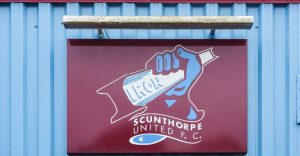
Image Michael715/Shutterstock.com
Don’t forget there is always Scunthorpe United Football Club to visit, too. You can’t visit their old stadium, but you can go see them at their new one… providing Covid-19 isn’t hanging over us. Glanford Park is simultaneously sporting attraction and town landmark. Book in advance to make sure you can get a seat/space.
Shopping and Retail
You have a large selection of shops in town. The famous Oldrids Department Store is in the eastern end of town, with the North Lincolnshire Shopping Park and the Gallagher Retail Park giving two different options in shopping for those who need it. You can buy anything here if you know where to look.
If you are willing to drive out to the nearby towns and villages, you should find plenty of garden centres that make up the ‘garden’ part of the town’s nickname.
Other Notable Attractions in Scunthorpe
We couldn’t have managed to cover everything there is to do in this wonderful Industrial town in one article – so instead we will pop those that didn’t make the cut, right here. It wasn’t anything personal… everyone deserves a mention:
- The Baths Hall is where you go in Scunthorpe if you want to see a show.
- The Foundry Shopping Centre is yet another shopping option.
- There is a Scunthorpe RUFC if you prefer rugby to football.
- The Playwright Theatre has been hosting shows for a long time. Pop in and sponsor the arts.
As you can see, Scunthorpe has something for everyone. The only thing that is missing, is you.
How to Get There?
It’s that time again, where we have covered everything there is to know about the town without actually having told you where it is located. Here’s how you get to Scunthorpe, should you take our advice and spend some time there.
By Road
Follow the M180 east out of Grimsby, or head west from Doncaster.
By Rail
Scunthorpe railway station is the central location for trains.
By Air
Humberside airport is only 13 miles away but Doncaster is bigger and has more flights.
By Sea
Although there’s no sea access, you can sail the River Ancholme if you have the right kind of boat.
Got Five Minutes?
Now that you have joined us for a five-minute tour of Scunthorpe, you will be delighted to know there are hundreds of other locations just like this one, covered in our pages. Have a look before you plan your next day trip, short stay, or staycation, to make sure you are squeezing as much as you can out of every drop!
